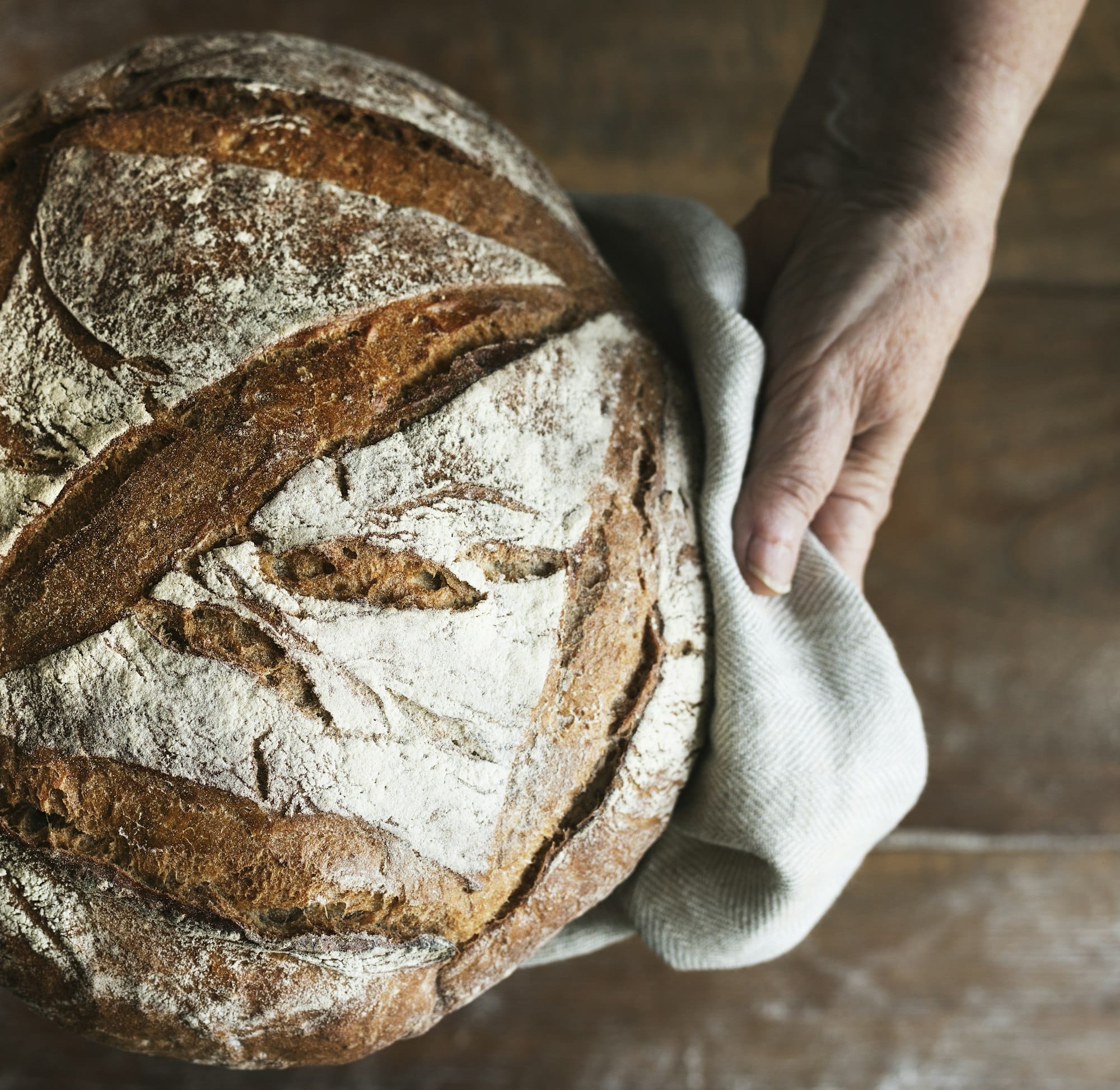How to Bake an Artisanal Sourdough Bread with a Crusty Exterior and Chewy Interior?

Ever wondered how to bake an artisanal sourdough bread with a crusty exterior and a chewy interior? Well, you’re in the right place. In this tutorial, we will guide you through the process, taking you through the necessary steps with the simplicity and precision you need.
Gathering Your Ingredients
Before we delve into the baking process, it’s essential to gather all the necessary ingredients. The key ingredients for this recipe include flour, sourdough starter, water, and salt. The sourdough starter is a mixture of flour and water that has been fermented over several days. This starter provides the yeast that will cause your dough to rise, giving your bread its distinctive sourdough flavor.
A lire également : Can You Make a Gourmet Baked Brie with Honey and Almonds for an Elegant Appetizer?
To begin, place about 500g of unbleached bread flour in a large mixing bowl. You will also need about 315g of water at room temperature, and 100g of sourdough starter. Lastly, prepare 10g of salt. It’s important to measure these ingredients accurately to ensure the right consistency and flavor of your bread.
Preparing the Dough
With your ingredients set, it’s time to prepare the dough. Start by adding the sourdough starter into the bowl of flour. Then, gradually pour in the water while you stir the mixture. Continue stirring until all the water has been incorporated into the flour. At this point, the dough will be a bit rough and shaggy. Don’t worry, that’s perfectly normal.
Cela peut vous intéresser : How to Perfect a Creamy and Refreshing Avocado and Cucumber Soup?
Let the dough rest for about 30 minutes to an hour. This resting period, known as autolyse, allows the flour to fully absorb the water, making it easier to incorporate the salt later on.
After the rest period, add the salt and a little bit of warm water to the dough. Use your hands to mix it in, kneading the dough until it’s smooth and elastic. This process, known as stretch and fold, develops the gluten in the dough, giving your bread its structure.
Fermenting the Dough
Once your dough is smooth and elastic, it’s time to let it ferment. This process is crucial for developing the tangy flavor characteristic of sourdough bread. Place the dough in a covered bowl and let it ferment for about 8 to 12 hours, depending on the temperature of your kitchen.
During fermentation, the bacteria and yeast in the sourdough starter will feed on the sugars in the flour, producing carbon dioxide gas. This gas causes the dough to rise and develop a network of tiny bubbles or holes, contributing to the bread’s texture.
Shaping and Proofing the Bread
After the fermentation process, it’s time to shape your dough. Gently deflate the dough and shape it into a round ball, ensuring the surface is smooth and tight.
Then, place the ball of dough seam-side up in a well-floured banneton. This is a special type of basket used to proof bread dough. It will help the dough maintain its shape as it rises a second time, and also impart a beautiful spiral pattern on the crust of your loaf.
Let the dough proof in the banneton for another 2 to 4 hours. During this time, the dough will rise again, becoming lighter and airier.
Baking the Bread
Preheat your oven to 475 degrees F (245 degrees C) and place your Dutch oven inside to heat up. The Dutch oven is an excellent tool for baking bread as it traps the steam from the baking bread, creating a moist environment that helps the bread to rise and develop a crusty exterior.
Once the oven and Dutch oven are hot, carefully remove the Dutch oven and flip the proofed dough out of the banneton and into the hot Dutch oven. Make sure the seam side of the dough is now facing down.
Place the lid back on the Dutch oven and bake your bread for 30 minutes. After 30 minutes, remove the lid and bake for another 15 to 20 minutes, until the bread is golden brown and the crust is crispy.
To test if your bread is done, knock on the bottom of the loaf. If it sounds hollow, it’s ready. If not, bake for a few more minutes.
That’s it! You’ve just baked your first artisanal sourdough bread. Remember, practice makes perfect, so don’t get discouraged if your first loaf isn’t perfect. With a bit of persistence and patience, you’ll master the art of sourdough baking in no time.
Understanding the Science Behind Artisan Sourdough Bread
To fully appreciate the process of making your own artisan sourdough bread, it’s helpful to understand the science behind it. In essence, the sourdough process is a complex interaction between flour, water, and the natural yeast and bacteria present in the air and on the grains of your flour.
When you make a sourdough starter, you’re essentially cultivating a mini ecosystem of yeast and bacteria. These microorganisms feed on the sugars in the flour, producing carbon dioxide gas and organic acids. The carbon dioxide gas is what makes the dough rise, while the organic acids give sourdough its characteristic tangy flavor.
The process begins with the mixing of flour and water to create a dough. This mixture becomes a feeding ground for the yeast and bacteria in your sourdough starter. As these microorganisms feed on the sugars in the flour, they produce carbon dioxide gas. This gas gets trapped in the network of gluten strands in the dough, causing it to rise.
A critical step in the sourdough process is the bulk fermentation stage. This is when the dough is left to rise for an extended period, often overnight. During this time, the yeast and bacteria continue to feed, producing more gas and organic acids. The longer the dough is left to ferment, the more pronounced the sour flavor will be.
The next step is to shape the dough into a loaf. This is often done by folding and rolling the dough to create a tight, smooth surface. The shaped dough is then left to proof for a few hours. During this time, the dough continues to rise as the yeast produces more gas.
The final step in the sourdough process is to bake the loaf. As the dough bakes, the heat causes the gas pockets to expand, creating the airy, chewy texture of sourdough bread. The crust forms as the surface of the loaf dries and hardens in the heat of the oven.
Conclusion
Making your own artisanal sourdough bread is a rewarding and delicious pursuit. While it does require time and patience, the result is a bread that surpasses anything you can buy in a store. The crusty exterior and chewy interior of a homemade sourdough loaf are simply unbeatable.
Not only is sourdough bread delicious, but it’s also healthier than most store-bought breads. The fermentation process makes the nutrients in the grains more accessible and easier to digest. Furthermore, the tangy flavor of sourdough bread pairs well with a variety of foods, making it a versatile addition to any meal.
The process of making sourdough is more of an art than an exact science. Each loaf will be unique, reflecting the specific conditions in your kitchen and the unique microorganisms in your starter. Don’t be discouraged if your first few loaves aren’t perfect. With each batch, you’ll learn more about the process and develop your skills.
So, pull out your flour, sourdough starter, and Dutch oven, and get ready to embark on your sourdough baking journey. The smell of freshly baked bread wafting through your home is worth every moment spent crafting your homemade artisan sourdough loaf. And remember, practice is key! Don’t be afraid to experiment and make each loaf your own. Happy baking!
